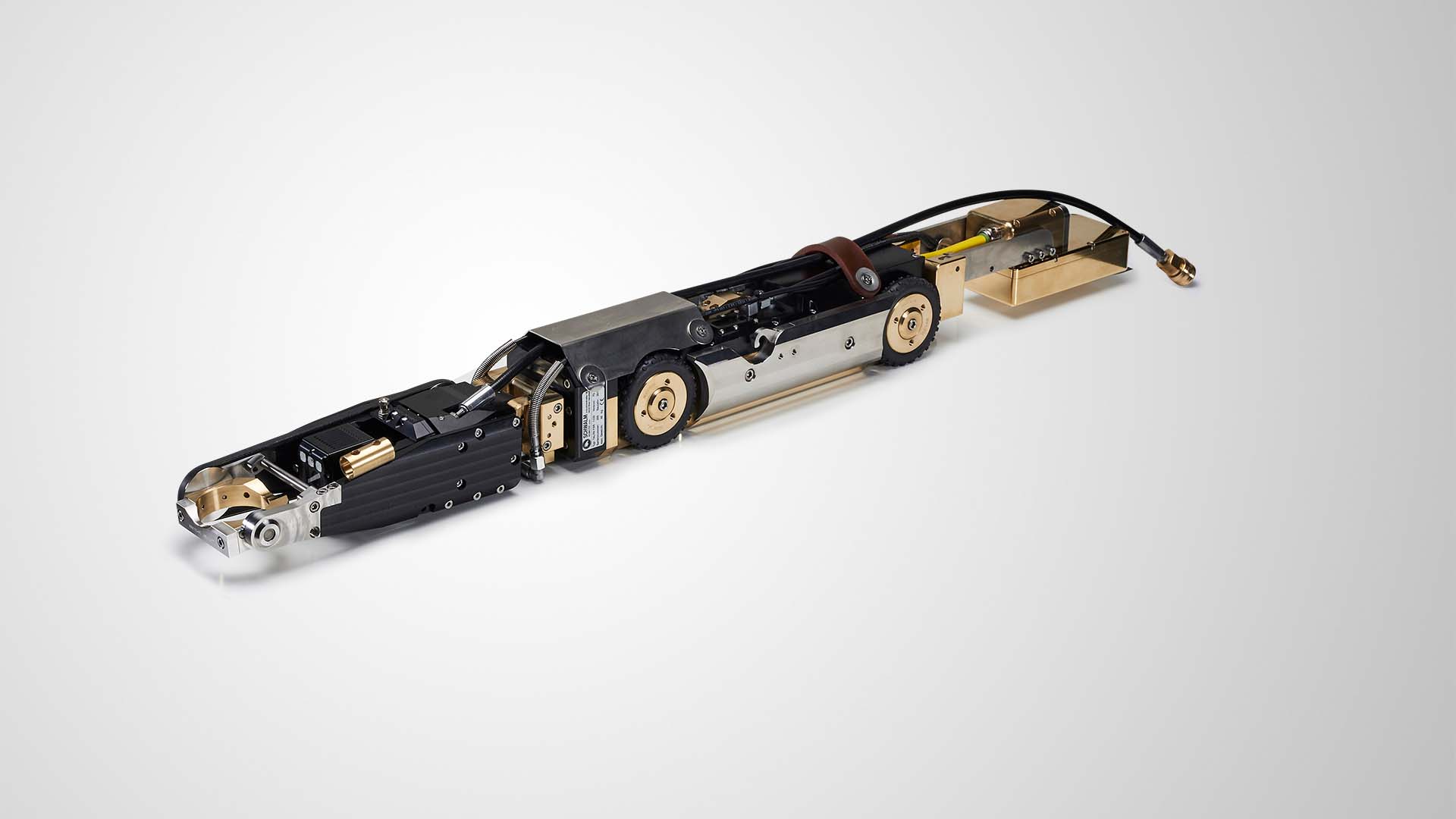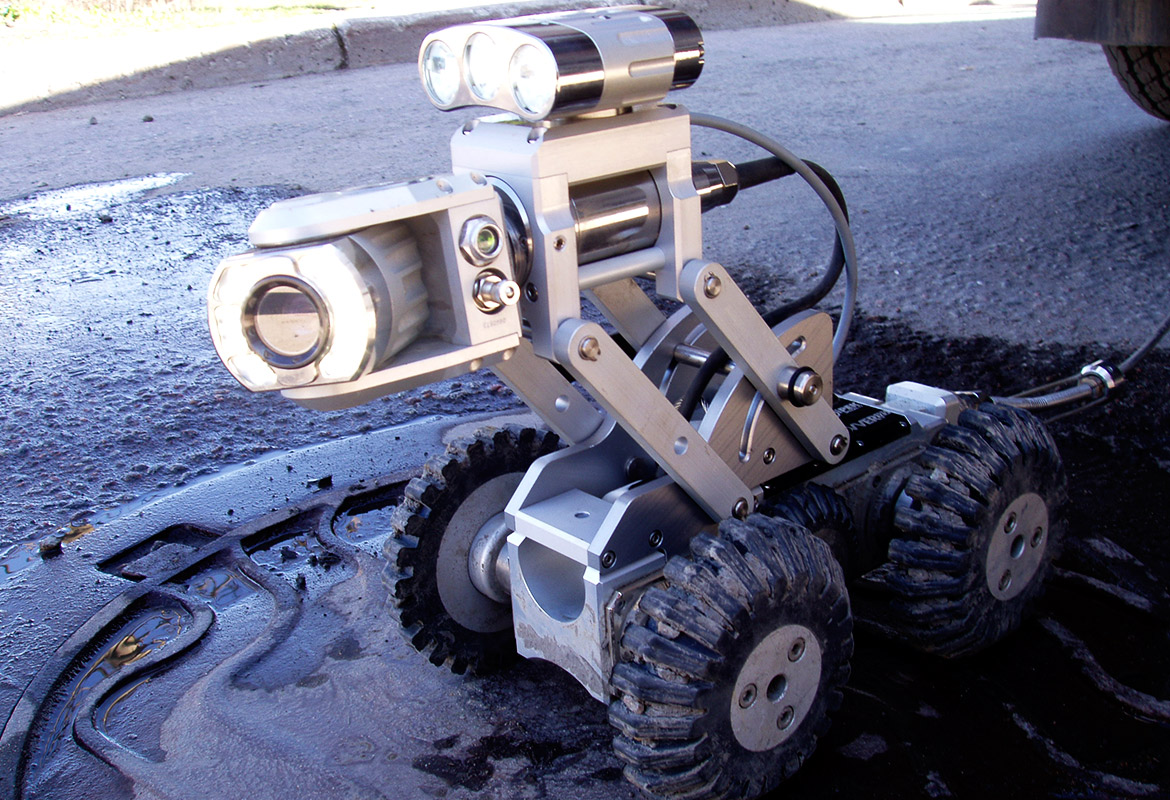
When carrying out trenchless rehabilitation of a water supply system, sewerage system or gas pipeline, it is often necessary to use self-propelled tele-inspection and repair robots.
First of all, it should be mentioned that before carrying out trenchless pipeline repairs, it is necessary to conduct a teleinspection of the areas to be repaired. This will help to obtain reliable information about the internal state of the pipeline, to make the right decision on the method of repair and the amount of work to be done. After the completion of the rehabilitation work, a teleinspection is also carried out to check the quality of the work performed and present the results to the customer.
These works are performed, as a rule, by self-propelled robots for teleinspection, which have no other (repair) functions and capabilities. This is due to the fact that teleinspection robots are lighter, more compact, cheaper and more convenient when performing pipeline video diagnostics than repair robots. In addition, teleinspection robots have a significantly lighter and thinner cable than robots for milling or internal pipe termination.
Based on the results of a video survey on the section of the pipeline to be repaired, places are identified that create problems for one or another type of rehabilitation. These can be metal repair pins (chops), or sharp burrs on a welded seam of a steel pipeline, or protruding reinforcement and pieces of concrete in a reinforced concrete pipeline, or other protrusions and irregularities that impede all the above-mentioned rehabilitation methods, as well as large-diameter through holes that make it impossible to repair with cement-sand lining or polymer spraying, and with especially large holes and sanitation with a polymer sleeve.
Repair of such problem areas is possible in different ways. For example, repair pins (chops) can be pulled out with a scraper during cleaning (it must be borne in mind that large holes will remain after this), and any defect can be eliminated by local excavation. But it is clear that the large number of additional excavations discredits the trenchless repair method itself. In addition, in many cases, excavation at the site of the defect may be difficult or impossible (if a highway or tramway, etc., pass over the site of the defect). To solve such problems, repair robots were created, capable of traveling tens or even hundreds of meters along the pipeline and performing various types of repair work in the pipeline. Repair robots are introduced into the pipeline through a well, if we are talking about a gravity sewer, or through a cut in a pipe in a well (or a pit made for this), if we are talking about a pressure water supply or a gas pipeline, etc. The repair robots are controlled by cable from a control station located in a car located in the immediate vicinity of a well or foundation pit.

Milling works are understood as: trimming protruding elements, cleaning, milling, grinding, cutting holes, etc. In this case, tools such as milling cutters (of various shapes and from various materials, depending on the purpose), cutting or grinding wheels, metal brushes are used etc. The main element of the milling robot is the spindle, which can be pneumatic, hydraulic or electric.
Typically, a pipeline milling robot is a self-propelled trolley equipped with a milling head and a video camera, controlled by a special combined cable from a laboratory vehicle and capable of moving through the pipeline and performing milling and cutting operations, as well as local stripping in the pipeline.





